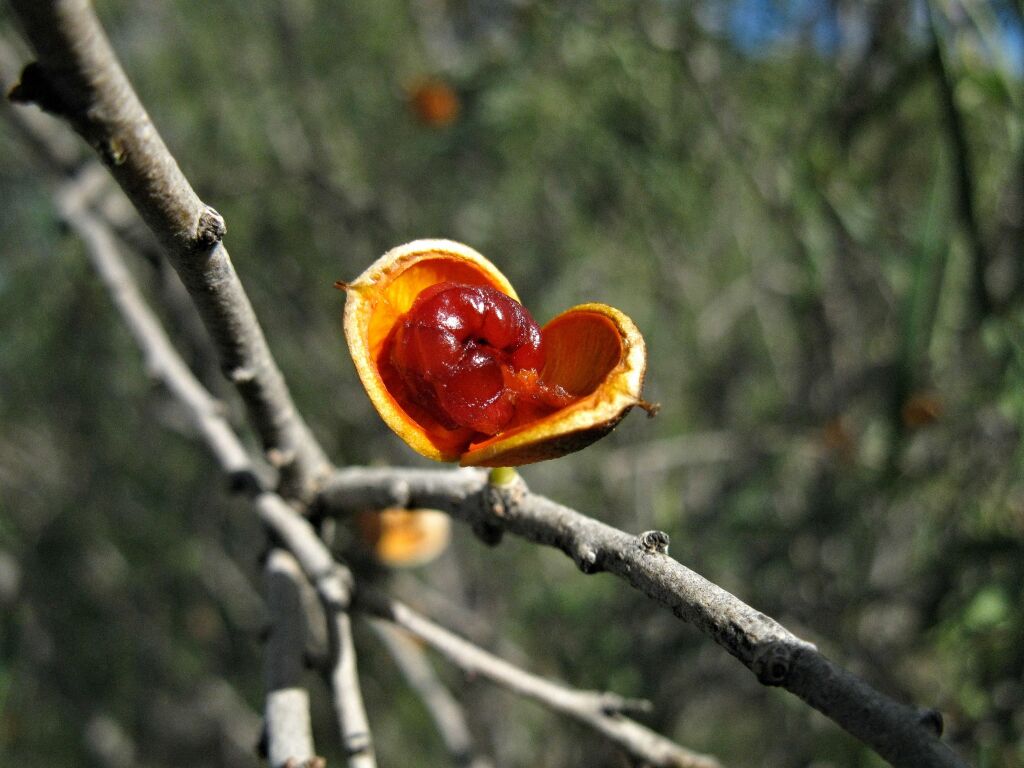Pittosporum angustifolium
Lodd.Slender shrub or tree to c. 10 m high; branchlets usually pendulous. Leaves linear or oblong, 5–12 cm long, 2–10 mm wide, usually uncinate at apex, glabrous; margins plane or slightly recurved. Flowers unisexual (possibly sometimes bisexual), sweet-scented, males mostly in axillary clusters of up to c. 6, females usually solitary in axils; pedicels decurved, 2–15 mm long; sepals free, broadly ovate or obovate, c. 2 mm long, greenish, glabrous or minutely ciliate on margin; petals oblong or narrowly obovate, c. 1 cm long, yellow, recurved toward apex; staminodes present in female flowers. Capsule flattened-ovoid, c. 10–20 mm long, often indented at base, glabrous, yellowish, inner face pale and smooth; seeds usually 6–10, 3–5 mm long, red-brown. Flowers Sep.–Nov.
LoM, MuM, Wim, VRiv, MSB, RobP, MuF, Gold, GGr, DunT, NIS. Also WA (native and naturalised), NT, SA, Qld, NSW. Locally common in north-western Victoria, more often on heavier loam soils than deep sands of the dunefields, with isolated occurrences in the south at e.g. Mt Arapiles, Edenhope district, and scattered along the Murray floodplain as far east as c. Rutherglen.
Walsh, N.G.; Albrecht, D.E. (1996). Pittosporaceae. In: Walsh, N.G.; Entwisle, T.J., Flora of Victoria Vol. 3, Dicotyledons Winteraceae to Myrtaceae, pp. 526–539. Inkata Press, Melbourne.
 Spinning
Spinning



